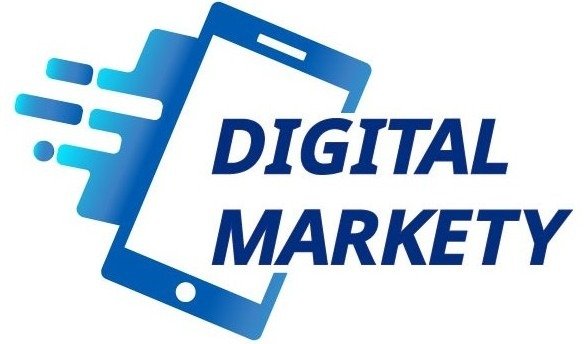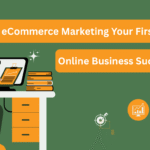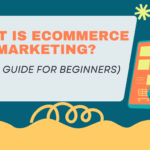
What are the 3 types of e-commerce?
What is E-Commerce?
What are the 3 types of e-commerce? E-commerce or electronic commerce, refers to the buying and selling of goods and services over the internet. This thriving industry has revolutionized the way we shop, offering convenience and variety at our fingertips. Whether it’s a small garage business selling handmade items or a multinational corporation, e-commerce creates opportunities for all levels of entrepreneurs.
Table Of Content
- What are the 3 types of e-commerce?
- Business to Consumer (B2C) E-Commerce
- Business to Business (B2B) E-Commerce
- Consumer to Consumer (C2C) E-Commerce
- Comparative Analysis of E-Commerce Types
- Trends Influencing E-Commerce Categories
- Challenges Faced by Different E-Commerce Types
- Future of E-Commerce: Predictions and Opportunities
- Conclusion
What are the 3 types of e-commerce?
Business to Consumer (B2C) E-Commerce
What are the 3 types of e-commerce? Business to Consumer (B2C) e-commerce represents a model of online shopping where businesses sell products and services directly to individual consumers. This model has revolutionized the retail landscape, allowing consumers to access goods and services from the comfort of their homes. One of the primary characteristics of B2C e-commerce is its focus on the end-user experience. This includes everything from streamlined website navigation to mobile optimization, all aimed at enhancing consumer satisfaction.
Several successful B2C platforms exemplify the effectiveness of this model. Giants such as Amazon, eBay, and Walmart have mastered the art of B2C e-commerce, leveraging user-friendly interfaces, extensive product offerings, and efficient delivery systems. These platforms utilize powerful algorithms that recommend products based on previous purchase behavior, which enhances the user experience and drives sales. The competitive nature of B2C e-commerce compels businesses to continually innovate and improve their offerings, ensuring they meet changing consumer needs and preferences.
Consumer behavior plays a pivotal role in shaping B2C transactions. Understanding how consumers make purchasing decisions can lead to more effective marketing strategies. For example, many companies use data analytics to track consumer habits, preferences, and feedback, allowing them to tailor their advertising efforts accordingly. Effective marketing strategies in B2C e-commerce often include targeted advertising, social media engagement, and personalized email campaigns. Furthermore, customer experience is paramount in this sector; companies often prioritize customer service, easy return policies, and responsive communication, thereby fostering loyalty and trust.
As B2C e-commerce continues to evolve, businesses must adapt to new trends, such as the rise of mobile shopping and social commerce. By maintaining a keen awareness of consumer expectations and leveraging technology, companies can position themselves for continued success in this dynamic marketplace.
Business to Business (B2B) E-Commerce
What are the 3 types of e-commerce? B2B e-commerce refers to the online transactions that occur between businesses, contrasting sharply with Business to Consumer (B2C) transactions, where businesses sell directly to end consumers. This distinction is significant and highlights several unique features characterizing B2B e-commerce. Typically, B2B transactions are characterized by larger order volumes, longer sales cycles, and a greater emphasis on establishing long-term relationships. As businesses often require bulk purchasing to meet operational demands, B2B platforms facilitate these larger transactions efficiently.
Moreover, B2B e-commerce primarily involves three types of transactions: supplier partnerships, wholesaling, and distribution. Supplier partnerships often allow businesses to secure better prices for raw materials, while wholesalers act as intermediaries between manufacturers and retailers, optimizing supply chains. Distribution, on the other hand, involves delivering goods from manufacturers to businesses, ensuring that products are readily available for resale. Each of these transaction types contributes to the complex ecosystem of B2B e-commerce.
Key players within the landscape of B2B e-commerce include manufacturers, wholesalers, and various intermediaries. Prominent B2B platforms such as Alibaba, ThomasNet, and Amazon Business serve as gateways for businesses to connect and transact seamlessly. These platforms not only provide vast product catalogs but also integrate tools that enhance communication, manage transactions, and foster trust between businesses. The benefits of engaging in B2B e-commerce are numerous; businesses can leverage bulk purchasing discounts, streamline procurement processes, and develop strategic partnerships that can lead to sustained competitive advantages.
In light of these factors, it is evident that B2B e-commerce plays a pivotal role in the modern economy, facilitating the smooth flow of goods and services between businesses while providing numerous advantages that enhance operational efficiency and growth potential.
Consumer to Consumer (C2C) E-Commerce
What are the 3 types of e-commerce? Consumer to Consumer (C2C) e-commerce represents a model in which transactions occur directly between individual consumers, typically facilitated by third-party platforms. This form of e-commerce has gained significant popularity, spurred by the rise of online marketplaces and sharing economies, allowing users to buy and sell goods and services without intermediary sellers. Prominent platforms, such as eBay, Etsy, and Craigslist, exemplify this trend by providing a virtual space for users to showcase their offerings.
The appeal of C2C e-commerce lies in its ability to foster a sense of community among users. Individual sellers often provide unique products that may not be available through traditional retail channels, thus enhancing consumer choice. Furthermore, the ability to set competitive prices allows consumers to find better deals, making C2C transactions financially enticing. Buyers often appreciate the chance to connect with local sellers, possibly creating opportunities for personal interactions that can enhance the purchasing experience.
However, engaging in C2C e-commerce does come with challenges. Trust and safety are paramount concerns in transactions where individuals do not know each other. To mitigate risks, platforms employ various verification processes, user ratings, and reviews to help buyers make informed decisions. Secure payment methods are also encouraged to protect both parties involved. Moreover, consumers must remain vigilant to avoid scams, as the anonymity of the internet can sometimes lead to fraudulent activities.
In the context of a growing sharing economy, C2C e-commerce continues to evolve, expanding the horizons of how consumers interact and conduct transactions. As this model becomes more entrenched in everyday life, understanding its dynamics and the role of established platforms is essential for both buyers and sellers navigating this increasingly popular landscape.
Comparative Analysis of E-Commerce Types
What are the 3 types of e-commerce? E-commerce is a multifaceted ecosystem that encompasses various transaction models, primarily categorized into three types: Business-to-Consumer (B2C), Business-to-Business (B2B), and Consumer-to-Consumer (C2C). Each type serves distinct target audiences, employs different transaction processes, and operates under unique business models. Understanding these differences is essential for stakeholders aiming to navigate the e-commerce landscape effectively.
Business-to-Consumer (B2C) is perhaps the most recognized type of e-commerce, where businesses sell products or services directly to consumers. This model typically integrates user-friendly interfaces and robust marketing strategies, focusing on enhancing customer experience. B2C platforms, such as online retailers, often utilize targeted advertisements and social media marketing to reach their audience, thereby increasing sales potential.
In contrast, the Business-to-Business (B2B) model involves transactions between businesses. This type of e-commerce usually features larger order volumes, longer sales cycles, and specialized customer relationships. B2B businesses often rely on personalized marketing strategies, including account management and relationship-building tactics. The transaction processes in B2B generally emphasize negotiation and contractual agreements, which are facilitated through comprehensive platforms designed for bulk purchasing.
Lastly, Consumer-to-Consumer (C2C) e-commerce allows individuals to sell directly to other consumers, typically through online marketplaces such as eBay or Etsy. This model leverages peer-to-peer networks, making it possible for users to set their prices and connect with potential buyers. C2C platforms often encourage community engagement through user ratings and reviews, enhancing trust and credibility among users.
Despite the differences, these types of e-commerce can coexist and even complement one another. For example, a B2B company may sell its products to both businesses and consumers, utilizing shared marketing strategies to maximize reach. Technological advancements, such as omnichannel marketing and data analytics, facilitate this integration by providing insights that enable businesses to tailor their approach across different e-commerce types.
Trends Influencing E-Commerce Categories
What are the 3 types of e-commerce? The e-commerce landscape is continually evolving, driven by a myriad of trends that shape the behavior of businesses and consumers alike. One of the most significant advancements is the rise of artificial intelligence (AI) and machine learning. These technologies enable e-commerce platforms to offer personalized shopping experiences by analyzing user data to create targeted marketing strategies. Personalized recommendations not only increase customer satisfaction but also greatly enhance sales conversions, prompting businesses to integrate AI into their operations.
Another transformative trend is the implementation of blockchain technology. By promoting transparency and security in transactions, blockchain helps build customer trust, which is paramount in the e-commerce sector. Its decentralized nature can facilitate smoother payment processes, reduce fraud, and streamline supply chain management. As awareness of blockchain benefits rises, companies across all types of e-commerce are likely to explore its potential for operational efficiency and enhanced customer experiences.
Shifting consumer behavior also plays a vital role in defining e-commerce trends. Today’s consumers value convenience and speed, often preferring mobile shopping experiences that allow them to purchase products with just a few taps. This trend has led businesses to invest in mobile-optimized websites and applications, ensuring that their offerings remain accessible. Additionally, the influence of social media cannot be overlooked; platforms such as Instagram and Facebook are now significant sales channels, where businesses can engage consumers through targeted advertising and direct links to purchase products.
Moreover, the growing emphasis on sustainability is reshaping e-commerce categories as consumers increasingly seek out eco-friendly products. Brands that adopt sustainable practices and communicate their commitment to purpose-driven initiatives are more likely to resonate with today’s conscientious buyers. By adapting to these trends, e-commerce businesses can remain competitive and better meet the evolving expectations of their customers.
Challenges Faced by Different E-Commerce Types
The landscape of e-commerce is marked by distinct models, namely Business-to-Consumer (B2C), Business-to-Business (B2B), and Consumer-to-Consumer (C2C), each accompanied by unique challenges that can affect their operational efficiency and sustainability.
In the B2C segment, one of the primary challenges lies in competition. With an increasing number of online retailers, standing out amidst the crowd requires innovative marketing strategies and exceptional customer service. Additionally, logistics management poses significant hurdles. Ensuring timely delivery while minimizing costs necessitates strategic partnerships with reliable logistics providers. As consumer expectations continue to evolve, adapting to faster shipping practices becomes increasingly important.
On the other hand, B2B e-commerce faces its own set of issues, particularly dealing with intricate payment processing systems. Unlike B2C transactions, B2B exchanges often involve larger sums of money and require tailored invoicing solutions. Regulatory concerns also complicate the landscape, as businesses must navigate compliance with various national and international laws. To mitigate these challenges, B2B companies are leveraging technology to streamline operations and ensure secure transactions, which in turn enhances reliability and fosters trust.
For C2C e-commerce platforms, the challenges are predominantly centered around platform governance and ensuring user safety. Fraudulent activities can erode trust among consumers, making robust verification processes essential. Furthermore, handling disputes effectively is crucial for maintaining user satisfaction. C2C platforms can address these issues through clear guidelines and responsive customer support systems.
In conclusion, while each e-commerce type encounters specific challenges, the overarching themes of competition, logistics, payment processing, and regulatory compliance necessitate innovative solutions. By fostering adaptability and leveraging technology, businesses can navigate these obstacles more effectively, paving the way for a more prosperous e-commerce environment.
Future of E-Commerce: Predictions and Opportunities
The e-commerce landscape is poised for substantial evolution in the coming years, driven by technological advancements, shifting consumer preferences, and new market trends. One notable trend is the increasing integration of artificial intelligence (AI) into online shopping experiences. AI can enhance customer service through chatbots, personalize product recommendations, and streamline inventory management, ultimately leading to improved operational efficiency. Furthermore, the use of augmented reality (AR) is becoming more prevalent, allowing consumers to visualize products in their own environments before making a purchase, thereby enhancing confidence in buying decisions.
Mobile commerce, or m-commerce, is another area expected to thrive as mobile devices become the primary means through which consumers engage with brands. With the enhancement of mobile payment systems and the continued growth of social media shopping features, e-commerce businesses have an opportunity to create seamless, user-friendly experiences tailored to mobile users. This shift may result in a broadening of target demographics, including younger consumers who favor shopping via their smartphones.
Additionally, sustainability is increasingly becoming a significant factor influencing consumer behavior. E-commerce platforms that adopt eco-friendly practices and offer sustainable products are likely to attract a conscientious consumer base. The rise of social entrepreneurship within the e-commerce sector also signifies a shift toward mission-driven business models, opening the door to niche markets that prioritize ethical considerations.
As the industry evolves, opportunities for new business models will also surface. Subscription services, personalized e-commerce experiences, and hyper-local delivery options are just a few trends that could reshape traditional retail frameworks. The development of cross-border e-commerce will present another avenue for growth, as businesses seek to tap into emerging markets around the world.
Conclusion
What are the 3 types of e-commerce? In this comprehensive guide, we have explored the three primary types of e-commerce: Business-to-Consumer (B2C), Business-to-Business (B2B), and Consumer-to-Consumer (C2C). Each type plays a significant role in the broader e-commerce landscape, catering to different audiences and transaction needs. B2C remains the most recognizable format, facilitating direct sales from businesses to individual consumers. This model has seen remarkable growth with the advent of online retail giants and diverse product offerings available at consumers’ fingertips.
Conversely, B2B transactions illustrate the complexity and scale of commerce, often involving larger quantities and higher value transactions between businesses. Understanding this dynamic is crucial for those involved in specialty services, wholesale distributions, or manufacturing sectors. It highlights the interconnectedness of businesses and the necessity for efficient supply chains and robust technological frameworks to support these interactions.
C2C platforms have revolutionized the way individuals engage in commerce, offering innovative solutions for peer-to-peer transactions. Sites like eBay and Etsy empower consumers to sell directly to one another, democratizing the marketplace and providing unique opportunities for entrepreneurs to thrive outside traditional business structures.
The e-commerce industry is continuously evolving, responding to technological advancements and changing consumer preferences. As such, it is crucial for businesses and individuals to remain informed about these three types of e-commerce and their implications. By understanding the nuances and opportunities presented by each type, stakeholders can make informed decisions to leverage e-commerce effectively in their business strategies or personal ventures. This awareness not only enhances operational efficiency but also encourages adoption of newer business models that align with market trends. Embracing these insights could lead to substantial growth and success in an increasingly digital world.






implemented your advice and my CTR went up 15%.